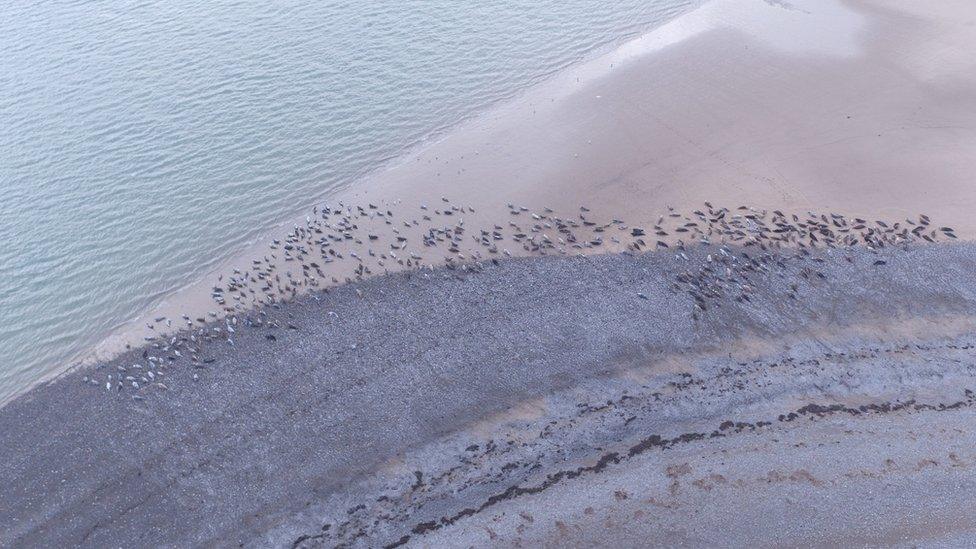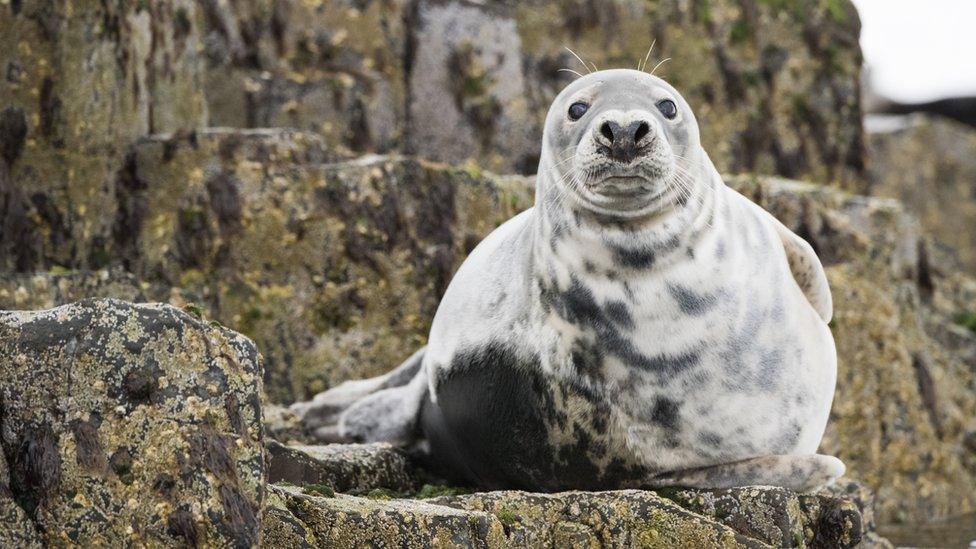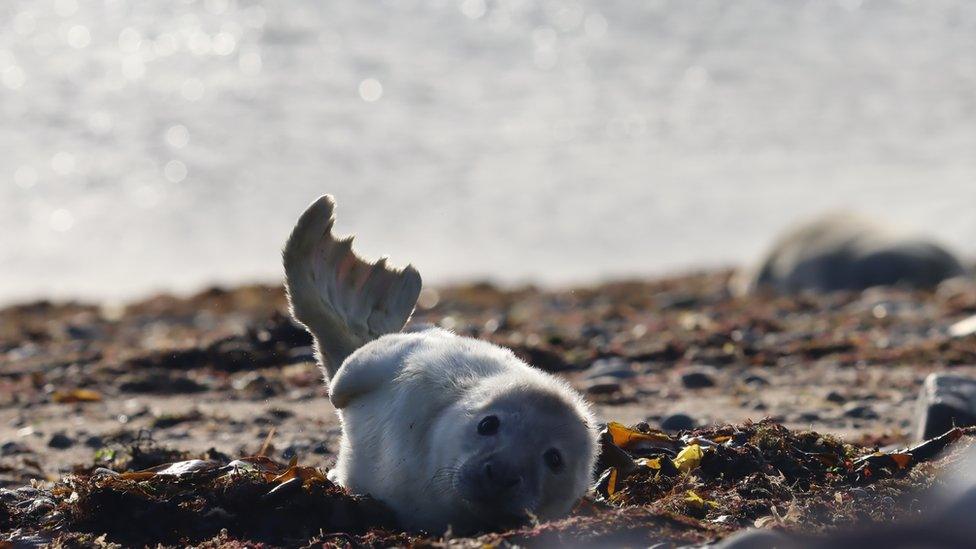Warnings disturbed seals may not return to South Walney
- Published

A record number of grey seals were recorded at the South Walney Nature Reserve in 2021
There are fears record numbers of seals might not return to a reserve after being disturbed by dogs.
Cumbria Wildlife Trusts said there had been three incidents this week involving dogs off leads frightening seals at the South Walney Reserve.
About 500 grey seals visited last February and so far this year there are about 150.
A marine conservation officer said future high numbers "might not happen" if people continued disturb them.
Georgia de Jong Cleyndert, who works at the reserve in Barrow-in-Furness, said when seals were frightened they "flushed", meaning they left their resting site and returned to the water.

Seals have been returning to the breeding colony at South Walney which was established six years ago
Ms de Jong Cleyndert said: "Flushing has a negative impact on the seals because at this time of year they're hauled out for resting and moulting, it's an important time of year for them to preserve their energy reserves so causing them to flush can result in energy loss, stress and often injury due to the stampede to reach the water.
"It takes a long time for them to come back to land after they've flushed."
Seal webcam
South Walney is the only grey seal colony in Cumbria and, although there is no public access to the beaches and the spit at the end of the nature reserve where the seals haul out at low tide, there are concerns people are ignoring the signs.
The reserve said there were reports of two men with dogs off leads frightening seals at the weekend and another incident on Monday.
Cumbria Wildlife Trust said there were places people can view the seals without bothering them, including two hides at Pier Hide and Sea Hide and the paths in between. There is also the seal webcam., external
Ms de Jong Cleyndert added: "This is the time of year when we see the most seals on the reserve, last February we counted 500 grey seals with our drone, so we're hoping to see these figures again but if there are disturbances that's not going to happen."

Follow BBC North East & Cumbria on Twitter, external, Facebook, external and Instagram, external. Send your story ideas to northeastandcumbria@bbc.co.uk, external.
Related topics
- Published7 January 2022

- Published9 September 2021

- Published12 April 2021
